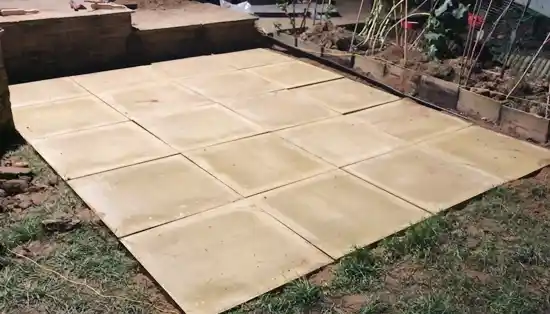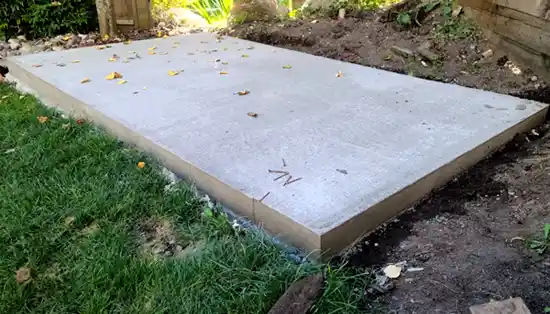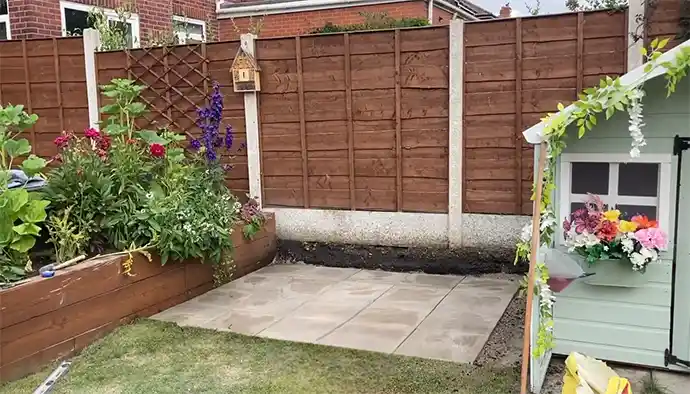Last Updated on January 8, 2023
A greenhouse base is the foundation of your greenhouse that provides a secure and level platform for constructing your gardening space and keeping it insulated from the elements.
It typically consists of a frame or wall built of metal, wood, or plastic, with gussets and trusses to provide extra stability. The inside of the frame is usually filled with insulation material to help keep the temperature consistent throughout the year.
Sealing the base of a greenhouse to concrete slabs helps ensure that your structure remains stable in all weather conditions. It also helps protect against moisture damage and pests such as insects, rodents, or other critters that can make their way into your growing environment.
Making sure there are no gaps between the slab and the frames makes it harder for these types of pests to find their way in and wreak havoc on your plants. Additionally, sealing any cracks or holes in the slab will help keep out drafts which can cause drastic changes in temperature that can be detrimental to your plants’ growth.
Furthermore, proper sealing will help prevent water from seeping up through any cracks or holes in the slab and damaging any electrical wiring used for heating systems or other utilitarian purposes within your greenhouse.
Preparing the Surface

Cleaning the Slab
Removing debris, dirt and other materials that can prevent a proper seal from forming: To ensure an optimal seal with minimal effort when sealing your greenhouse’s base to concrete slabs, you’ll need to start by thoroughly cleaning both surfaces so nothing disrupts proper adhesion between them once they are joined together.
This means removing any loose dirt, dust particles, grease stains, paint residue or other debris off both surfaces before you begin applying any sealer products.
Depending on how stubborn some of these spots may be you may want to use stronger cleaning solutions specifically designed for removing these types of materials which tend to stick more easily than regular household cleaners like detergent and water would allow for otherwise
Selecting an appropriate cleaning solution depending on the slab surface material: Once all visible debris has been cleaned off both surfaces you’ll need to select an appropriate cleaner based on what type of material makes up each surface’s composition; this includes both sides of each slab as well as those making up your frames if they’re made out anything other than metal (which usually requires less work when it comes time to clean).
Different cleaning solutions work better with different materials such as tile grout versus natural stone so make sure you take into consideration what type of surface you’ll be working with before purchasing any products since using something too abrasive could potentially damage whatever material is being treated instead of just removing unwanted residues left behind after cleaning
Making Necessary Repairs
Filling in any cracks or holes with suitable cement-based patching compound: After everything has been sufficiently scrubbed down it’s important not to forget about making sure any small cracks or large holes have been properly patched first before attempting anything else on either side since leaving them open could mean potential leaks later down the line due to improper adhesion between surfaces when sealed together if not repaired beforehand; this includes filling in irregularities around corners where pieces join together too since allowing even small amounts air leakage through these spaces can ruin an otherwise perfect seal job afterwards
Leveling out any uneven spots on the surface of the slab with a trowel and mortar mix: In order for everything else done later on during this process (as well as after) there needs be some degree consistency amongst both sides during preparation which often requires someone who knows what they’re doing taking extra steps like leveling out dips along edges where pieces join together using mortar mix if necessary; this involves adding small amounts thick mixture onto low sections around corners while gently pressing down onto them until they match higher adjacent parts before allowing time set over night while occasionally wetting mixture as needed until completely dried out following day
Applying Primer and Caulk
Preparing the concrete slab surface for the application of primer and caulk
When preparing the concrete slab surface for the application of primer and caulk, there are several steps that must be taken to ensure a successful outcome. First, any dirt or debris should be removed and the surface thoroughly cleaned with a mild detergent. After cleaning, it is important to inspect the area for any cracks or other imperfections that may have occurred during installation.
If any imperfections are found, they should be filled with an appropriate sealant before applying primer and caulk. It is also essential to check the pH level of the slab’s surface to ensure it is within an acceptable range (usually 5-8). If not, then an alkalinity neutralizer can be added prior to applying primer and caulk. Finally, if necessary, it is recommended to lightly sand or grind down rough spots on the slab prior to priming and caulking.
Common materials used in primers and caulks
When selecting a type of primer or caulk for use on concrete slabs, there are two main categories of materials that are typically used: acrylics/latexes and urethanes. Acrylics/latexes are generally less expensive but require more frequent reapplication in order to maintain effectiveness over time; urethanes provide longer-lasting protection but cost more initially.
Additionally, some specialty products such as epoxies or elastomeric basecoat can also be used depending on specific needs; however these tend to be much more expensive than either acrylic/latex or urethane products. For caulks specifically designed for adhering greenhouse bases to concrete slabs, silicone-based products generally provide superior adhesion properties while still allowing some flexibility which prevents cracking due to temperature changes.
Maintenance tips between applications
The success of a proper seal between a greenhouse base and a concrete slab depends largely upon periodic maintenance activities between primer/caulk applications. In areas prone to seasonal temperature fluctuations such as cold winter climates or hot summer climates, it is important to inspect periodically for any signs of deterioration such as cracking or peeling of existing sealant material due to expansion/contraction caused by changing weather conditions.
When this happens, it is important that old sealant material is properly removed before applying new material in order for effective adhesion between substrate surfaces which will help prevent further issues in future years.
Additionally, all surrounding areas should be inspected regularly as well since if water leaks into a greenhouse base from surrounding surfaces like walls this could eventually lead to rotting wood structure frames over time if left unchecked; caulk maintenance can help protect against this scenario by preventing leakage at seams where floor meets wall at foundation level
How many coats of sealant are necessary to ensure an effective seal between the greenhouse base and concrete slabs?

Typically, two coats of sealant are necessary for an effective seal between a greenhouse base and concrete slabs. The first coat acts as a primer, helping to ensure that the second coat has its desired effect.
An additional layer of protection can be achieved by including a thin layer of asphalt between the two surfaces before applying the sealant.
Does the climate or weather affect the choice of sealant used for this application?
Yes, the climate or weather can affect the choice of sealant used for this application. Sealants that are resistant to extreme temperatures should be chosen in areas with very hot summers or cold winters, while other types of sealants may be appropriate in more temperate conditions.
UV-resistant sealants should also be chosen if there is significant exposure to direct sunlight, as this will help extend their lifespan and effectiveness.
Are there any safety precautions that should be taken when applying sealant between a greenhouse base and concrete slabs?
Safety precautions should always be taken when applying any type of sealant between a greenhouse base and concrete slabs. Proper safety equipment such as gloves, glasses, and mask should always be worn when handling chemicals or materials related to the process.
Additionally, it is important to follow all manufacturer’s instructions precisely in order to avoid any accidents or unwanted results during application.
How long does it typically take for a sealed connection between a greenhouse base and concrete slabs to cure completely before use can begin?
Depending on several factors such as temperature, humidity levels, and ventilation within the space, it typically takes from 24 hours up to several days for a sealed connection between a greenhouse base and concrete slabs to cure completely before use can begin.
After applying the sealant it is important to allow for adequate curing time for the best results possible once use begins.
Conclusion:
To seal a greenhouse base to a concrete slab, proper steps should be taken that involve using appropriate materials for the desired result and understanding the importance of ensuring longevity.
Firstly, it is important to choose the right sealant material that is designed to be impermeable to water and other elements. The selection process should consider how well the sealant will adhere to both surfaces and the expected weather conditions.
Moreover, the application should follow instructions carefully with regards to surface preparation, mixing ratios, curing and drying times for each product used in order to ensure optimal performance.
Additionally, it is beneficial to use additional methods such as pre-sealing methods or secondary joint protection strategies such as edge restraints and reinforcing fabrics. All these actions lead towards protecting concrete slabs from ground movement damage or any other external factors which could have an impact on their durability and longevity.



